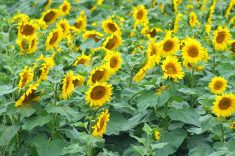Glacier FarmMedia | MarketsFarm – The executive director of Manitoba Pulse and Soybean Growers said there aren’t any “red flags” so far when it comes to growing conditions.
With six weeks until the expected start to seeding, Daryl Domitruk said this winter has seen a reasonable amount of snow in pulse-growing areas across the province. Normal spring conditions would help the crop, but there would still be variability.
“So far, so good is how I’d put it,” he added. “When you get into seeding season, it’s so day-to-day. One day (there) could be very nice conditions and the next, all of a sudden, the taps come on and it’s raining and there’s far too much moisture.”
Read Also

Pulse Weekly: Tariffs guide yellow peas in 2025
Tariffs were a major influence on Canadian yellow pea prices in 2025, with levies imposed by China and India. The two countries are Canada’s biggest foreign pulse buyers.
While peas are more suitable to warmer and drier conditions than dry beans and soybeans, Domitruk said those crops still need warm soil to aid their development.
“Our crops really need a good start. We look at soil temperatures as well as moisture,” he added. “If we get our normal weather patterns and the snow disappears in short order, we’ll be okay. It’s always good to get a rain or two but that desire stops in late April when the main goal is to get the crop in.”
Statistics Canada, in its principal field crops report released on March 12, estimated Manitoba to seed 194,100 acres of dry edible beans for the 2025-26 marketing year, up 3.6 per cent from the previous year. As for dry peas, StatCan projected an 11.4 per cent decline at 169,500 acres. Soybean acres are to be up 14.1 per cent at 1.626 million.
However, those figures were collected before United States President Donald Trump implemented tariffs on Canadian imports and before China placed a levy on Canadian peas. Nevertheless, Domitruk said growers will mostly stick to their rotations and some will try to make up for lost opportunities in 2024-25.
“Last year, we thought we’d get a few more soybean acres and dry bean acres, but we ran out of seeding season. Seeding was delayed a little bit. So I think the intentions people had to put in a little bit more soybeans and a little bit more dry beans were stopped because we hit the crop insurance deadline for seeding,” he said.
“I think we’re kind of sticking with the notion this year that there will be similar to slightly more soybean acres as well as dry bean acres.”
However, the double whammy of tariffs on peas could negatively affect acres.
“Most Manitoba peas go to Roquette (in Portage la Prairie) or to the United States. We’re waiting to see what the U.S. tariffs potentially hold. But that China tariff is the big one,” Domitruk explained.
















